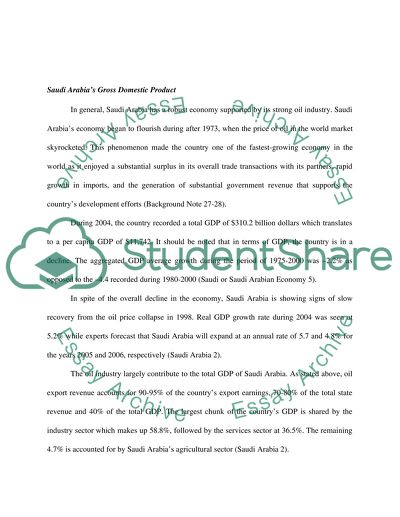Cite this document
(“Saudi Arabia's Economy Essay Example | Topics and Well Written Essays - 2500 words”, n.d.)
Saudi Arabia's Economy Essay Example | Topics and Well Written Essays - 2500 words. Retrieved from https://studentshare.org/politics/1517593-saudi-arabias-economy
Saudi Arabia's Economy Essay Example | Topics and Well Written Essays - 2500 words. Retrieved from https://studentshare.org/politics/1517593-saudi-arabias-economy
(Saudi Arabia'S Economy Essay Example | Topics and Well Written Essays - 2500 Words)
Saudi Arabia'S Economy Essay Example | Topics and Well Written Essays - 2500 Words. https://studentshare.org/politics/1517593-saudi-arabias-economy.
Saudi Arabia'S Economy Essay Example | Topics and Well Written Essays - 2500 Words. https://studentshare.org/politics/1517593-saudi-arabias-economy.
“Saudi Arabia'S Economy Essay Example | Topics and Well Written Essays - 2500 Words”, n.d. https://studentshare.org/politics/1517593-saudi-arabias-economy.


